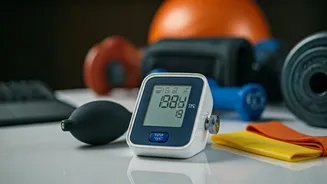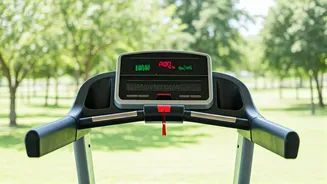Walking: Get Moving
Walking is an accessible and highly effective exercise for blood pressure management. Regular brisk walking, even for short durations, improves cardiovascular
health. Aim for at least 30 minutes of brisk walking most days of the week. This activity increases heart rate, strengthening the heart muscles and improving blood flow. The ease of walking makes it ideal for individuals of all fitness levels. Consistency is key, so incorporate walking into your daily routine. Consider using a pedometer or fitness tracker to monitor your steps. Walking can be done anywhere, anytime, providing a simple yet powerful way to reduce blood pressure naturally. A study reveals that regular walking can significantly lower systolic and diastolic blood pressure levels.
Jogging: Cardio Boost
Jogging, a step up from walking, delivers a more intense cardio workout that's highly beneficial for lowering blood pressure. It enhances heart health, improves blood circulation, and helps maintain a healthy weight, all contributing to lower blood pressure readings. Begin gradually, increasing the jogging duration and intensity over time. This helps to prevent injuries and allows the body to adapt. Alternate jogging with walking to build endurance and prevent fatigue. Jogging also releases endorphins, which can improve mood and reduce stress, further benefiting blood pressure. Make jogging a consistent part of your weekly exercise regimen. Jogging 3-4 times a week, combined with other healthy habits, provides considerable benefits for cardiovascular health.
Swimming: Gentle Exercise
Swimming provides a low-impact yet effective way to exercise and manage blood pressure. The buoyancy of water reduces stress on joints, making it suitable for people with joint pain or other physical limitations. Swimming involves all major muscle groups, providing a full-body workout that improves cardiovascular fitness. Regular swimming strengthens the heart, improves circulation, and helps maintain a healthy weight. Aim for at least 30 minutes of swimming several times a week, varying your strokes and intensity to keep the workout engaging. Because it's a relaxing activity, swimming also helps reduce stress levels. This combination of physical and mental benefits makes swimming an excellent choice for individuals aiming to lower their blood pressure naturally.
Cycling: Pedal Power
Cycling is another excellent cardio exercise that effectively lowers blood pressure and promotes cardiovascular health. It's a low-impact activity that's easy on the joints, making it a good choice for people of various ages and fitness levels. Regular cycling strengthens the heart, improves blood flow, and helps maintain a healthy weight. Aim for at least 30 minutes of cycling several times a week. You can cycle outdoors or use a stationary bike indoors. Cycling also reduces stress and improves mood. Whether you're commuting, exercising for leisure, or participating in organized cycling, this activity makes a positive impact on your blood pressure. For those who enjoy outdoor adventures, cycling on different terrains adds variety and boosts fitness levels.
Strength Training: Build Muscle
Strength training, also known as resistance training, is vital for lowering blood pressure. By building muscle, you increase your metabolism and reduce body fat, both of which support healthy blood pressure. Begin with lighter weights and gradually increase the resistance as you get stronger. Include exercises that work all major muscle groups. Perform strength training exercises 2-3 times per week, with rest days in between to allow your muscles to recover. While strength training is beneficial, combine it with cardiovascular exercises for optimal results. Consistent strength training improves overall fitness, muscle strength, and bone density. Consult a fitness professional for proper form to prevent injuries and ensure effective workouts. Focus on maintaining good posture throughout each exercise.
Yoga: Relax and Breathe
Yoga offers a holistic approach to managing blood pressure by combining physical postures, breathing exercises, and meditation. Specific yoga poses improve flexibility, balance, and muscle strength, while also promoting relaxation and reducing stress. Deep breathing techniques help lower heart rate and blood pressure. Regular yoga practice has been shown to reduce both systolic and diastolic blood pressure. Try incorporating yoga poses such as mountain pose, tree pose, and child's pose. Practice yoga regularly, preferably 2-3 times per week, along with other exercises. Yoga is effective because it reduces stress, a significant factor in high blood pressure. Consider starting with beginner-friendly yoga classes or online tutorials. Yoga's focus on mindfulness promotes overall well-being and aids in maintaining healthy blood pressure levels.











